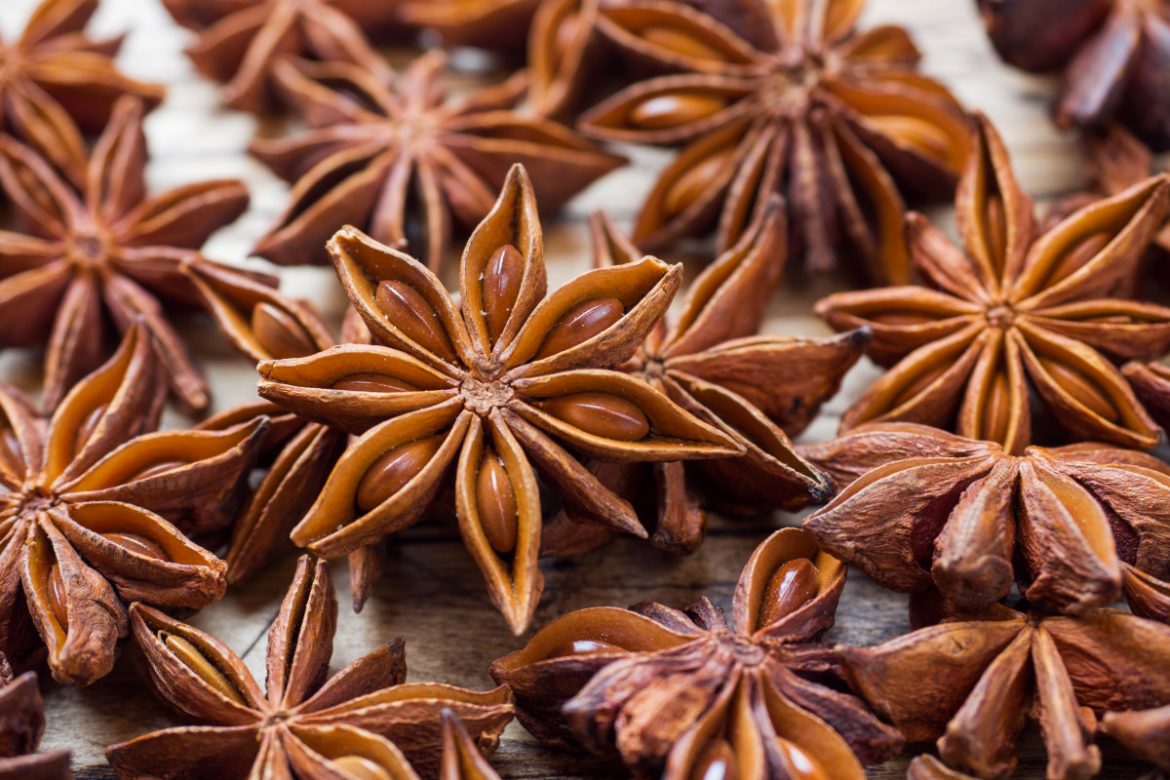Product Features
Anise (Illicium verum HooK.F.) is an evergreen tree, a specialty aromatic plant of China, mainly distributed in Guangxi, Guangdong, Guizhou, Yunnan and other provinces. Guangxi is the main producing area of anise in China, accounting for 85% of China’s production and 70% of the world’s, and the anise tree has become one of the most important economic trees in the region. Anise and star anise oil are popular food seasonings, and star anise oil has a spicy aniseed aroma. Besides being used as a flavoring spice, star anise oil is also widely used in the food industry, brewing industry, beverage industry, cosmetics and pharmaceutical industry.
Currently, aniseed oil is produced in China and abroad by steam distillation, traditional organic solvent extraction and supercritical CO2 fluid extraction. The yield and quality of star anise oil are different depending on the process.
Anise oil is made from high quality natural anise extract, which has special aroma and sweetness. It is widely used and convenient to use. It can be used in all kinds of sausage enemas, canned fish and meat processing. Adding the right amount of anise oil has an obvious flavoring effect. It can add deliciousness to all kinds of grilled and shabu-shabu food and is a common spice seasoning oil used in families and restaurants.
Process
Dried star anise fruit → Crushing → Sieving → Steam distillation → Anise seedling essential oil → Filling → Finished product
Operating Points
- Crush the dried star anise with a crusher, through a 30 mesh sieve.
- distillation of the crushed anise will be added to the distillation pot, directly heated with steam, the boiler will produce high-pressure saturated steam through the tube into the distillation pot, so that the pressure reached 3.4 × 105 Pa or so. The essential oil is then distilled together with the water vapor and passed through the condenser to the oil-water separator, where the oil is separated.
- Filling: The essential oils are dispensed in clean glass bottles, which are finished products.
Quality Requirements
The main constituents of anise are aniseed brain, which accounts for about 80%-90%, anisyl ketone, anise aldehyde, methyl pycnogenol, dipentene, etc. Among them, the molecular formula of aniseed brain is C10H12O with a molecular weight of 148.20, and its structural formula is.
Anise oil has a clear and pungent aroma and a sweet taste. Anise brain is a colorless to pale yellow liquid that solidifies at low temperatures as white crystals, and is liquid at room temperature with a special aroma.
- The finished product is colorless to pale yellow liquid.
- Relative density (20 ℃) 0.980 ~ 0.994.
- Refractive index 1.553 ~ 1.558; rotation -2° ~ +1.
- freezing point > 15 ℃.
Note:
(1) Water vapor distillation speed is fast, heating to boiling time is short, the duration of distillation is short, the fragrance components in the distillation changes less, the ester components of hydrolysis opportunity is small, so as to ensure the quality of essential oils.
(2) In the distillation if the oil in the oil pipe above the water separator no longer shows an obvious increase in the oil layer, the distillation will be terminated.
(3)If fresh anise fruit is used to distill the essential oil, the anise fruit should be crushed before distillation, and the oil yield is 1.78%.
(4) Anise oil should not be stored for a long time, otherwise the content of anise brain will be reduced, the content of p-allyl anisole will increase, and the physical and chemical properties of the oil will also change, but the oil can be stabilized by adding 0.01% of butylated hydroxytoluene.
(5) Aniseed oil should be packaged in glass or white tin containers, stored at a temperature of 5 to 25 ℃, the relative humidity of the air does not exceed 70% of the light storage.

